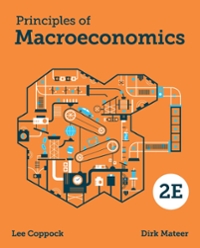The following questions please help
Problem 2 (25 points) C'Didr the following list of prices for serocoupon bonds with face value of $l of 1carious maturities. {a} Calculate the yield to maturity of each zero coupon bond. {3 points} {h} Calmlate the implied seouence of forward rates. {3 points} {c} Suppose W you want to invest in zero coupon bond for 2 years, all the zero coupon bonds involved in this part have face value of $1DDG. Today's short rate is I596. Here are two strategies: (1} Hold 2year maturity zero coupon bond until maturity (2} Purchase a 3year maturity zero coupon bond, and sell it at the end of second year. Your expected short rate in each year are given as followed: Tim period sears} Which strategy will you choose? Explain. {9 points} In a particular economy, all homeowners own identical homes worth $80,000 a piece. These homes are subject to complete loss via fire, and the Old Reliable Insurance Company (ORIC) offers policies against loss by fire. The chance of a fire at any particular home is a probability, p, which is known to the homeowner, but not to ORIC. The values of p run from 0 to as high as 0.4. Homeowners have no control over their value of p; it is simply given. For instance, Peter Reece has a home on the edge of a forest, and for his house, p=0.1. John Yost has a home in the suburbs and for his house p=0.03. ORIC is risk neutral and offers two different policies. The first is a "full insurance" policy which pays the homeowner $80,000 in the event of a fire. The Premium for this policy is $11,600. The second, "partial insurance," policy pays back $58,400 in the event of a fire, and has a premium of $5,900. This means that a customer who buys the second policy and has no fire, is out $5,900. A customer who buys the second policy and does have a fire receives a payout of $58,400 - $5,900 = $52,500. All the homeowners are expected utility maximizers and have the same utility function: U(x) = vx+ 10000 Where x is the "net" payoff of this situation, including the value of the house if there is no fire. For instance, a consumer who buys the second insurance policy and has no fire receives utility , 10,000 + 80,000 - 5,900 = :84,100 = 290, while with a fire the utility is : 10,000 + 58,400 - 5,900 = ,/62,500 = 250. a. Of the three options available (no insurance, partial insurance, full insurance) what would be the choice of Mr. Reece? Mr. Yost? b. For which values of p would consumers with that value of p choose no insurance? Partial insurance? Full insurance? You should answer so that, for any value of p between 0 and 1, we can tell what the consumer would choose. (A graph, with p on the x-axis and expected utility on the y-axis will help you figure this out.)2) Suppose all people in RiverCity own identical cars worth $80,000 apiece. During La Nina years, RiverCity is hit by cyclones and receives heavy rains and hence RiverCity cars are prone to complete loss by flooding. The chance of a major flood for a particular car is p. The value of p is known to the car owners but not to WaterCorp. The values of p run from 0 to as high as 0.4. Car owners have no control over p. For example, Karen lives at the bottom of a hill and parks her car on the street. For her car p = 0.1. Wen lives on top of a hill and parks her car in a garage; for her car p = 0.03. Luckily, WaterCrop Insurance Company offers policies against such flood damage. WaterCorp is risk neutral and offers two policies. The first is a full insurance policy, which pays the car owner back $80,000 in the event of a flood. The premium for this insurance policy is $11,600. The second policy offers partial insurance. It has a payback in the event of flood of $58,400, and a premium of $5,900. All the residents in RiverCity are expected utility maximizers and have the same utility function: u(x) = Vx+ 10,000 where x is the net of this situation, including the value of the car, if there is no flood. For example, a consumer who buys the partial insurance policy and has no flood has utility of u (80,000 - 5,900) = V80,000 - 5,900 + 10,000 = 290, while with a flood, the utility is u (58,400 - 5,900) = V58,400 - 5,900 + 10,000 = 250









